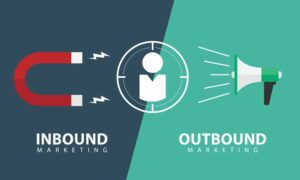Marketing Personas: How and Why to Create Them
Before you spend a dime on advertising your products or services, it’s very worthwhile to first create your marketing personas. Marketing personas, or buyer personas, are often used to determine and understand your target audience, what their pain points are, and how you can help make their life better.
The importance of marketing personas
Creating buyer personas for your business might feel complicated, but you’re in luck – like most things in digital marketing, there’s a process to help you create a great marketing persona. This really is a crucial first step in running an inbound marketing campaign. It helps you not only understand the pain points of your customers, but it also helps you clearly define all the factors that goes into your persona’s purchasing decisions. In fact, I would go so far as to that if you’re spending big money with a marketing firm that hasn’t gone through this process (or a similar one) with you, it’s almost marketing malpractice. That’s how strongly I feel about this.
It helps you get in the heads of your ideal clients and write content that will be valuable to them, create offers that answer some of their most painful questions, and architect a conversion path that keeps them engaged and excited about your company and the value that you bring to them.
Most importantly it clarifies WHO you serve, WHAT value you deliver, and it helps you recognize and document the differences between your marketing personas.
How to create a marketing persona
In this next section, we’ll break down the main components of creating a new marketing persona. Follow along, download the worksheet, and get ready to build out your very first marketing persona.
Segment your customers
I recently listened to a sales rep for a skincare company describe her audience as “anyone with skin”. Last I checked, that’s… uh, well, everybody. While that might be true, that’s not a good persona, because when you’re trying to market to everybody, you’re actually marketing to nobody.
So, in this case, instead of marketing to “everyone with skin”, let’s break these down into buckets. I’m not a skincare professional by any stretch of the imagination, but I would start by suggesting segmenting “anyone with skin” into these buckets:
- Moms shopping for their teenage daughters
- Middle-aged women, shopping for themselves
- Women who are aging, and are beginning to have a different set of skincare concerns
Are these the right personas? Probably not, because I’m a marketer and not a skincare pro. But , these suggestions would likely start a conversation that would lead us to the right personas.
The point here is that if your persona is “everybody”, we need to narrow down. Even if you sell to everyone, everyone buys differently and HOW you sell to your customers is more important than WHAT you’re selling to them.
It’s important to think through the different personas that you will want to create, and then start by focusing on the one persona that makes up the highest percentage of your business.
Start with demographic data
Now that we have determined which marketing personas you will be creating, pick one and let’s build out the demographic data. For demographic data, we want to document your persona’s:
- Age
- Occupation
- Income
- Education level
- Marital status
- Location
- What books, magazines, and blogs do they read?
- What events and conferences would they like to attend?
- What brands and influencers do they actively follow and engage with?
- Anything else that’s particular to your industry
This is important because it helps you determine where and how you might reach these people and can help guide your content marketing activities.
What are your persona’s pain points?
Some of the things we need to document in this section are:
- What keeps them up at night?
- What annoys and/or frustrates them?
- What challenges do they face on a daily basis, big and small?
- Who or what is standing in their way in the way of their success and happiness?
- What are some key systems in their life/job that frequently fail?
- What’s something they’re forced to interact with that’s difficult to manage or understand?
- What features (or lack of features) do they regularly complain about in related products/services?
It’s very important to understand what annoys your persona. By this point, we’re starting to get into the good stuff – the goal of good marketing is to help them articulate where they’re at and where they’re trying to go, and position your product or service as the road to get them there. So, don’t skip this step because it will be crucial in how you communicate with your audience.
What are your persona’s wants and aspirations?
As we just mentioned, good marketing is a journey from where your ideal customer is currently and where they want to go. So, some of the questions you should answer are:
- What do they want for themselves?
- What do they want for the people around them?
- What do they aspire to be?
- What goals have they set for themselves?
- What values do they hold dear?
- What are their “secret” desires?
What are the Key Purchase Drivers?
Think of Key Purchase Drivers as the must-haves that your marketing personas are looking for. These include:
- Must-have features
- Expectation of service
- Price/Budget considerations
- Quality expectations
- Are there any known deal-killers?
- What are some common objections that must be overcome?
- Any additional stakeholders or decision-makers?
This is basically used as a check to make sure that your product meets the needs of your prospect. The best marketing strategy in the world will fail if your product or service falls short of your persona’s key purchase drivers.
Your Marketing Persona’s Before and After State
The Before and After State is where the magic happens with marketing personas. You’ll use all of the research that you’ve done up until this point to fill this out.
During this exercise, you’ll ask yourself a series of questions about your marketing personas before they purchase from you. Then, you’ll ask the same questions about your persona after they buy from you.
So, here’s what it looks like. Before your potential customers find you:
- what do they have (or not have)?
- how do they feel (or not feel)?
- what does their average day look like?
- what is their status?
- what’s the existential threat facing your persona? (if one exists)
Now we’ll ask the same questions again, this time focusing on your customer after they’ve bought from you.
- what do they have now (or not have now)?
- how do they feel (or not feel)?
- what does their average day look like?
- what is their status?
- what’s the existential threat facing your persona? (if one exists)
Researching Your Marketing Personas
You might be looking at all of this thinking, “This looks great, but where do I get this information”. That’s a great question, and the answer is, “It depends.”
Here’s how I like to do marketing persona research. First of all, there’s very likely a LOT of information contained within your organization – your sales team, customer service team, social media managers, etc. Anyone that is customer-facing in your organization likely has their pulse on the pain points and goals of your prospects. So, when you start to develop your marketing personas, bring in members of those teams. Your sales team is likely very familiar with the key purchase drivers, your social media team likely has their pulse on customer complaints and questions, and your customer service team is helping your customers meet their goals.
Have this conversation with your internal team and document your marketing persona. Afterward, check what you’ve come up with and make sure you’re right by interviewing real customers. If you can interview prospects that didn’t buy, that’s extremely valuable, too. I can’t stress this point enough -it is VERY common for a business to think they know who their customer is and be dead wrong. So, make sure to interview your customer.
Create Your Negative Personas
As you wrap up your persona work, you’ll start to see trends in your ideal customers. Almost as important are the trends in your nightmare customers. It could be that there are personality traits that make them difficult to work with, it could be that if a company is under a certain revenue they are less likely to value your services and will ask for too much or be slow to pay, it could be that certain types of clients have a low lifetime value or a high churn rate. Whatever the reason, these are the characteristics that should throw up red flags that you should be careful with this client as they move through the sales funnel. If you can identify and segment these types of customers, it can be very valuable to your bottom line.
Use Forms to Capture Marketing Persona Details
After you’ve created your marketing personas, the next thing that you will need to do is make sure that you are capturing enough information from your website leads to segment each lead into a particular persona. If you segment your personas based on the size of their business, then consider adding a form field that asks for the number of employees, industry, job title, or anything else that helps you segment your contacts into a persona. Once you have this information, you can send personalized, targeted emails to your leads based on the products or services that you know will be most appealing to them.
Start Slow
Start with one or two personas and create additional personas as needed. A large company with lots of services may have 10 or 20 personas, but it’s not uncommon for most businesses to have less than five. To get started, download our free eBook “How to Create Buyer’s Personas” below.
{{cta(’60da342c-08f0-46dc-be13-e7d07fc55cac’,’justifycenter’)}}





